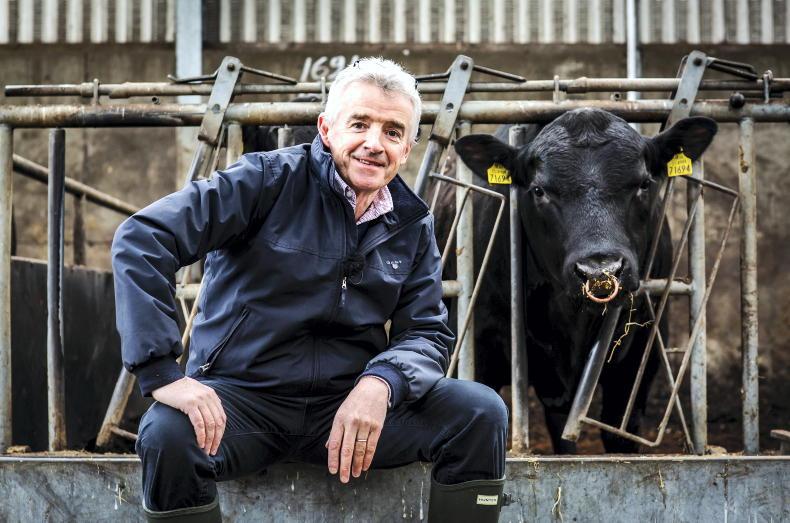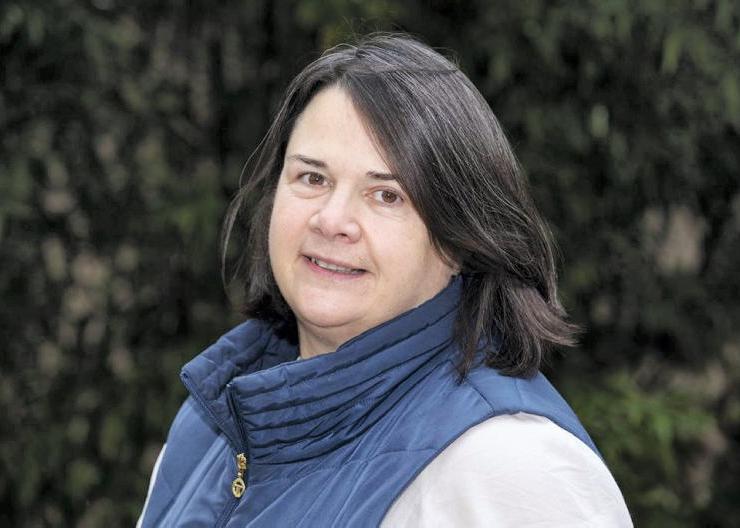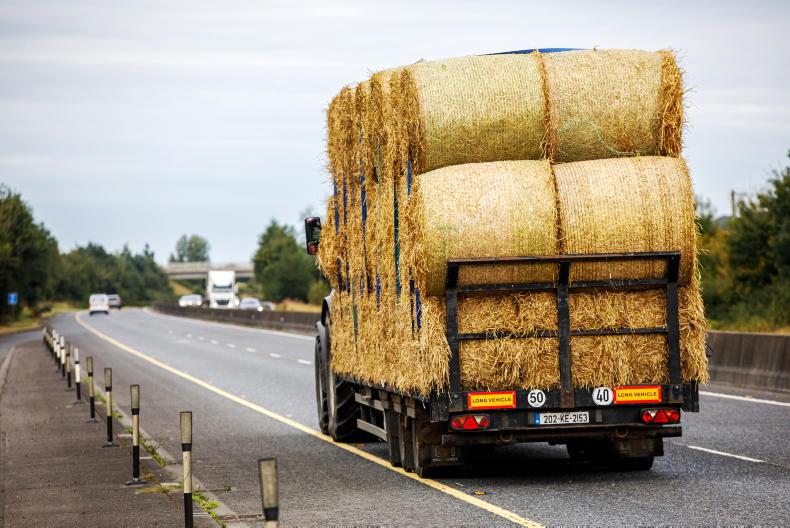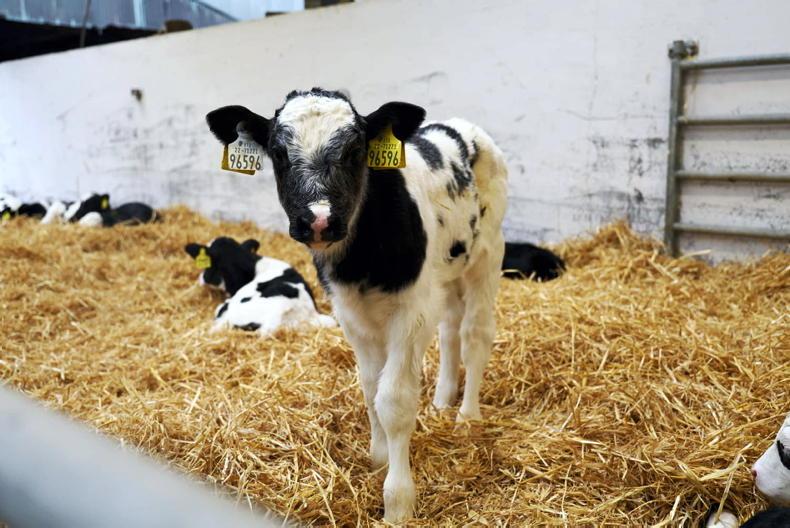There are just six weeks left before the closed period for spreading chemical nitrogen and phosphorus. There is a lot of grass on farms now, so it doesn’t make sense to be spreading too much nitrogen at this stage. Following the cows with 20 units/acre of nitrogen until late August (half of this rate on paddocks with good clover content) is more than enough. Nitrogen can then be blanket-spread across the farm in early September, depending on average farm cover and growth rates. Order potash for fields that are low in K and spread up to 100 units/acre in autumn.

Milk recording. \ Donal O'Leary
A late summer milk recording can tell a lot about cows within the herd. The two most important items of information from this recording is:
Identifying the poor-performing cows within each lactation. As all cows are now gone past peak production, it’s a much more level playing field when it comes to making comparisons. Looking at performance within lactations will compare animals on a like-for-like basis. It’s more important to know the bad cows than it is to know the good cows. Select the bad ones for culling.Individual quarters on high-SCC cows (over 1m SCC) should be sampled and treated now, before the autumn. Cows that are consistently high-SCC and are not responding to treatment should either have quarters dried off or be culled.
Liners should be changed every 2,000 milkings or every six months.
Teagasc recommends that milk liners should be replaced every 2,000 milkings. Some manufacturers claim that liners will last up to 2,500 milkings but most recommend replacing every six months. This means that if liners were changed at the start of the year, they are due to be changed again now. Long pulse tubes and long milk tubes should be replaced every 18 months or whenever there are signs of holes or cracks appearing on the line. Short pulse tubes are more prone to holes and cracks and should be replaced annually. Placing the liners and tubes in hot water will soften the rubber and make it easier to work.
August is a good month to do repairs to farm roadways. Over time, a grass verge will build up on the sides of the road which will prevent water from flowing off. This is the main cause of many common problems associated with roads. The best way of tackling this is to take down the wire along the road and scrape off the verge with a track machine.

August is the ideal month for farm roadway repairs. \ Donal O'Leary
Try to get a camber on the road so that water will run off. Blind the road with a thin layer of fine material, ideally a sandstone/slig-type soft stone. A relatively small amount of time and money spent on roads every year will help to prevent lameness and get longer out of existing roads.
Not many Irish farmers do a grass budget either. This is a really simple tool that helps you to make decisions around feed use and grazing management. 
To do an autumn grass budget you start on 1 April and work backwards to today. On 1 April, you should have an average farm cover (AFC) of around 500kg/ha. How much grass you will grow and how much your herd will eat in spring determines what AFC you should have on 1 February. How much you grow over the winter will determine what AFC you should have on 1 December. The purpose of the autumn budget is that you manipulate feed intake to make sure you achieve that AFC on 1 December, which then follows through to achieving the targets next spring. PastureBase grass software makes budgeting easy.
With the breeding season over and most of the second-cut silage wrapped up, the excuses for not taking a holiday are getting harder to find. Taking time off is not just good for your health, but it’s also good for the farm business. Due to COVID-19, the options for places to go are now more limited. The plus side is that there are now more people in the community who would be willing to do some relief milking. Organise a break and make it happen.
The longer calf and calving sheds are left clean and dry the better. Most bugs and viruses won’t survive in the absence of moisture. The best approach is to power-wash all surfaces in the shed, leave them to dry out and then disinfect all surfaces and leave to dry.
Every year we hear of salmonella outbreaks wrecking havoc on herds by causing early abortions. It can cause major losses if it enters and spreads through a naïve herd. The best policy is to vaccinate against salmonella and to do so early, with most advice suggesting that August is the best time to vaccinate. If a herd is being vaccinated for the first time, all pregnant animals will have to be done twice but if the herd has been vaccinated before, in-calf heifers will have to be done twice and cows once.
There is much more certainty around income and expenditure now, compared to earlier in the year. Most Irish farmers aren’t into budgeting money but if you don’t have a good handle on your finances then you will struggle to make financial progress. An easy, back-of-the-envelope-type calculation is to find out your bank balance today. Add up the expected income from now to year-end, so that’s milk and stock sales, BPS and other income and add this to the current balance. Then deduct all money due to be paid now and what will be due later in the year. The big ticket items are household running costs, merchant bills for feed and fertiliser, tax, contractor, labour and loan repayments but the smaller items all add up also such as insurance, electricity, etc.
After doing this sum you will be left with your free cash position. Obviously, if this is a minus then you need to do something to change that fast. If it is a positive figure then you have choices. Don’t forget about the rainy-day fund or the college fund if children are still young.
The best time to sow grass seeds is April and the second best time is August. It’s not that grass seeds sown later than August won’t germinate. They will, but the number of grazings achieved before closing for winter will be less than fields sown in early August. This is critical from a tillering and weed control point of view. Some will argue that on a relatively highly stocked farm (2.5 livestock units/hectare), August is too late as the land will be out of production for too long. It will be at least two months before animals will be back grazing a field that is sprayed with glyphosate today and that is when everything goes according to plan.
Read more
June uplift delivered for suppliers
Dairy Management: fodder crops, breeding season and fodder stocks
There are just six weeks left before the closed period for spreading chemical nitrogen and phosphorus. There is a lot of grass on farms now, so it doesn’t make sense to be spreading too much nitrogen at this stage. Following the cows with 20 units/acre of nitrogen until late August (half of this rate on paddocks with good clover content) is more than enough. Nitrogen can then be blanket-spread across the farm in early September, depending on average farm cover and growth rates. Order potash for fields that are low in K and spread up to 100 units/acre in autumn.

Milk recording. \ Donal O'Leary
A late summer milk recording can tell a lot about cows within the herd. The two most important items of information from this recording is:
Identifying the poor-performing cows within each lactation. As all cows are now gone past peak production, it’s a much more level playing field when it comes to making comparisons. Looking at performance within lactations will compare animals on a like-for-like basis. It’s more important to know the bad cows than it is to know the good cows. Select the bad ones for culling.Individual quarters on high-SCC cows (over 1m SCC) should be sampled and treated now, before the autumn. Cows that are consistently high-SCC and are not responding to treatment should either have quarters dried off or be culled.
Liners should be changed every 2,000 milkings or every six months.
Teagasc recommends that milk liners should be replaced every 2,000 milkings. Some manufacturers claim that liners will last up to 2,500 milkings but most recommend replacing every six months. This means that if liners were changed at the start of the year, they are due to be changed again now. Long pulse tubes and long milk tubes should be replaced every 18 months or whenever there are signs of holes or cracks appearing on the line. Short pulse tubes are more prone to holes and cracks and should be replaced annually. Placing the liners and tubes in hot water will soften the rubber and make it easier to work.
August is a good month to do repairs to farm roadways. Over time, a grass verge will build up on the sides of the road which will prevent water from flowing off. This is the main cause of many common problems associated with roads. The best way of tackling this is to take down the wire along the road and scrape off the verge with a track machine.

August is the ideal month for farm roadway repairs. \ Donal O'Leary
Try to get a camber on the road so that water will run off. Blind the road with a thin layer of fine material, ideally a sandstone/slig-type soft stone. A relatively small amount of time and money spent on roads every year will help to prevent lameness and get longer out of existing roads.
Not many Irish farmers do a grass budget either. This is a really simple tool that helps you to make decisions around feed use and grazing management. 
To do an autumn grass budget you start on 1 April and work backwards to today. On 1 April, you should have an average farm cover (AFC) of around 500kg/ha. How much grass you will grow and how much your herd will eat in spring determines what AFC you should have on 1 February. How much you grow over the winter will determine what AFC you should have on 1 December. The purpose of the autumn budget is that you manipulate feed intake to make sure you achieve that AFC on 1 December, which then follows through to achieving the targets next spring. PastureBase grass software makes budgeting easy.
With the breeding season over and most of the second-cut silage wrapped up, the excuses for not taking a holiday are getting harder to find. Taking time off is not just good for your health, but it’s also good for the farm business. Due to COVID-19, the options for places to go are now more limited. The plus side is that there are now more people in the community who would be willing to do some relief milking. Organise a break and make it happen.
The longer calf and calving sheds are left clean and dry the better. Most bugs and viruses won’t survive in the absence of moisture. The best approach is to power-wash all surfaces in the shed, leave them to dry out and then disinfect all surfaces and leave to dry.
Every year we hear of salmonella outbreaks wrecking havoc on herds by causing early abortions. It can cause major losses if it enters and spreads through a naïve herd. The best policy is to vaccinate against salmonella and to do so early, with most advice suggesting that August is the best time to vaccinate. If a herd is being vaccinated for the first time, all pregnant animals will have to be done twice but if the herd has been vaccinated before, in-calf heifers will have to be done twice and cows once.
There is much more certainty around income and expenditure now, compared to earlier in the year. Most Irish farmers aren’t into budgeting money but if you don’t have a good handle on your finances then you will struggle to make financial progress. An easy, back-of-the-envelope-type calculation is to find out your bank balance today. Add up the expected income from now to year-end, so that’s milk and stock sales, BPS and other income and add this to the current balance. Then deduct all money due to be paid now and what will be due later in the year. The big ticket items are household running costs, merchant bills for feed and fertiliser, tax, contractor, labour and loan repayments but the smaller items all add up also such as insurance, electricity, etc.
After doing this sum you will be left with your free cash position. Obviously, if this is a minus then you need to do something to change that fast. If it is a positive figure then you have choices. Don’t forget about the rainy-day fund or the college fund if children are still young.
The best time to sow grass seeds is April and the second best time is August. It’s not that grass seeds sown later than August won’t germinate. They will, but the number of grazings achieved before closing for winter will be less than fields sown in early August. This is critical from a tillering and weed control point of view. Some will argue that on a relatively highly stocked farm (2.5 livestock units/hectare), August is too late as the land will be out of production for too long. It will be at least two months before animals will be back grazing a field that is sprayed with glyphosate today and that is when everything goes according to plan.
Read more
June uplift delivered for suppliers
Dairy Management: fodder crops, breeding season and fodder stocks













SHARING OPTIONS